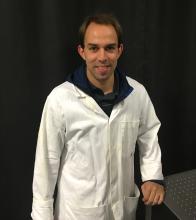
Department of Chemical Engineering and Biotechnology
West Cambridge Site
Philippa Fawcett Drive
Cambridge
CB3 0AS
Mail: az404@cam.ac.uk
Research Interests
My research utilizes a combination of computational calculations with experimental results in order to gain further insight into the forces that govern chemical systems. This work has proven valuable in many areas in chemistry, such as crystalline polymorph analyses, pigment classification, and determining the vibrational modes responsible for polymorphic conversion.
A majority of my work has focused on small organic crystalline samples, and more recently includes the way that pharmaceuticals can be made more bioavailable through amorphous drug delivery.
The main experimental techniques that I am familiar with are low-frequency vibrational spectroscopy (Terahertz time-domain spectroscopy and low-frequency Raman scattering) and X-ray diffraction, although my work has involved the use of many other techniques. On the theoretical side of my research, solid-state density functional theory is used.
Using low-frequency vibrational spectroscopy is a very useful way for probing both the intermolecular and intramolecular forces in a sample. While this is a good way to fingerprint a sample, determining the exact motions of spectral features is challenging in the terahertz range. The use of theoretical calculations can solve this problem, with accurate simulations providing a means of determining the motions in a spectra, as well as making it possible to calculate the energetics and stabilities of samples.
